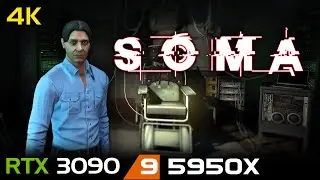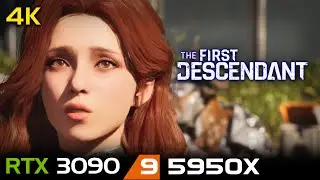Red Dead Redemption PC (2024) | 4K | RTX 3090 | 5950X | Unlocked FPS
Without recording add up ~2-5% of performance when gpu is at 95-100% usage.
Mod used to unlock the FPS:
"ClipTweaks - FPS Unlocker and DOF removal."
For recording i used Nvidia Shadowplay.
Shadowplay settings:
3840x2160 resolution;
Framerate: 60;
Bitrate: 70mbps.
PC info:
cpu: AMD Ryzen™ 9 5950X;
gpu:GeForce RTX™ 3090 GAMING OC;
ram: G Skill TridentZ 64gb DDR4 3466 Mt/s (4 sticks, dual channel, quad rank)
tCL 14, tRCDWR 8, tRCDRD 15, tRP 14, tRAS 29, tRC 43, tRFC (ns) 160, tRFC 277; GDM ON, + other manually tuned tight subtimings.
mobo: ROG Crosshair VIII Hero X570 (WI-FI);
soundcard: Creative Sound BlasterX Ae-5 ;
cpu cooler: Icerberg Thermal IceFLOE OASIS 360mm AIO;
pc case: Corsair 780T;
psu: Corsair HX1200 Platinum 1200W;
Operating system: Windows 11 Pro. (VBS/Memory integrity - OFF, HAGS - OFF, Game mode - OFF, Game bar - OFF)
Game Drive - HDD (WDC WD4003FRYZ) 7200RPM, 256mb cache, CMR, 4TB.
This is the drive you see on my RTSS performance overlay and it is being used solely for games, for video recording i use different hard drive.
The "HDD" usage statistic you see on my overlay is ONLY from the game running and is not effected by any other application.
Boot Drive - sata SSD, Samsung 850 EVO 512GB.
All 5950x settings were set on AUTO.
All 5950X settings were set on AUTO (in other words completely stock), amd virtualization feature has been enabled in the bios, nvidia resizeable BAR is enabled.
My motherboard's AUTO disables PBO by default. Power limits set to its defaults
PPT - 142W;
TDC - 95A;
EDC - 140.
Some explanation of my overlay statistics:
"GPU PERF LIMIT" also known as "PerfCap Reason". As name suggests, shows the reason, why GPU performance is capped, limited. If reason becomes "no load" it means that gpu itself is not the limiting factor.
"Minimum" or "Min" FPS is commonly misinterpreted as the absolute lowest fps value during the measurement, but it is far from the truth. In RTSS, the Minimum FPS value is not instantaneous; it is averaged and never calculated from a single frametime value. The minimum value is smoothed over a 1-second interval using a sliding window approach. This sliding window approach helps to show more recent minimum sustained framerates, as opposed to 1% or 0.1% low metrics, which are averaged throughout the entire benchmark run and measure frametime spikes.
"GPU Busy" is a new feature presented by intel, which measures GPU active time in rendering pipeline. In perfect scenario GPU busy time should match game frametimes (FT in my OSD), that means the GPU is fully occupied in game rendering, in other words - fully utilized and optimized without any external stalls, such as driver overhead, cpu bottleneck, ram bottleneck.
PS. For GPU busy statistic i used 3 second delay for smoother graph data delivery.
"Bottleneck: CPU/GPU" analyzes data stream from statistics of "msGpuActive" or "GPU Busy" and "msBetweenPresents" or "Game frametimes(FT)" and reports if "GPU busy" time takes 80% or more of frametime.
"GAME VRAM USAGE" also known as "Process VRAM usage" - shows how much vram current running process (in this case, the game) requires, others likes to call it "dedicated vram usage" even though it is bad term to use.
"TOTAL ALLOCATED VRAM" - shows how much of VRAM is allocated from all programs in windows, windows itself, if opened - web browsers, spotify, discord, etc. Also allocation increases from multiple monitors as well, so the more monitors and with higher resolution are connected the higher allocation will be.
(This value is the same as in windows task manager, under GPU tab "Dedicated GPU memory usage")
Regarding the whole VRAM usage debate, none of these two values shows true game VRAM requirements and when it will start to starve of VRAM deficiency. And there are no way to truly know it unless you test with less VRAM, but usually its impossible to test with same GPU as there are no ways to artificially limit VRAM usage. These values are more suited as guidelines rather than definitive proof, but usually performance starts to drop, when game has saturated 100% of "Total allocated VRAM" and it will have issues when "Process VRAM usage" will be at 100% of total GPU VRAM buffer.
The monitoring program used in the top left corner is MSI Afterburner On Screen Display + Rivatuner Statistic Server. The actual overlay was displayed using "RTSS overlay editor" and not from MSI afterburner.































